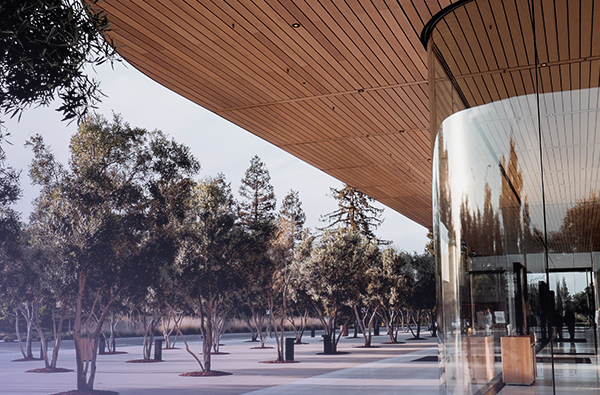Table of contents
Mews Unfold 2021 may be over, but the insights live on. If you missed any of our two-day hospitality extravaganza, you can wipe away those tears: we’ll be recapping the most interesting moments in the form of the written word (i.e. these blogs) and you can also watch any of our sessions here.
This article covers the content from the first Unfold session, in which Matt and Richard pick through the state of our industry today and explore the five trends that we think are here to stay. Without further ado:
1. The modern guest is blurring travel
For a long time, business was business and leisure was leisure – and never the twain shall meet. But a combination of changing attitudes and improving technology means that hybrid travel is here, and ‘blend and extend’ will be a phrase you hear more and more of. Here’s Airbnb CEO, Brian Chesky, talking about it:
“Before the pandemic, people disproportionately travelled to the same iconic tourist destinations: Rome, London, Paris, Las Vegas, New York. Travel meant visiting for two or three nights on business or a week or two on vacation. Now, the lines between travelling and living are blurring. Remote workers aren’t just travelling on Airbnb, they’re living on Airbnb for months at a time.”
So what does this mean in practical terms if you’re a hotelier? For one thing, it gives you the opportunity to diversify your customer base. If you always thought of yourself as primarily a business hotel or focussed mainly on leisure guests, you can tap into another segment by making a few simple changes to your marketing and upgrades to your property like super fast WiFi.
Much of the change in habits is being driven by the Millennial demographic, who tend to have more flexibility and high disposable incomes. However, it’s the mindset shift that’s perhaps most interesting for hoteliers: there’s a big focus on personal wellness in combination with a preference for eco-friendly travel. Hotels that promote sustainability will reap the benefits, as will those who focus on experiences that go off the beaten track.
If you’d like to know more about the modern guest, we’ve written a whole report about them. Check it out here.
2. The war on talent shows no signs of slowing
It’s no secret that there’s a staff shortage in hospitality right now. And it’s not only hotels – it’s hospitality tech too. A combination of retraining during the pandemic and trepidation to return to the sector because of perceived uncertainty means that companies are finding it increasingly difficult to fill roles that previously they had multiple options for.
So how do you attract the best talent, whether you’re hiring a receptionist or a revenue manager? As Richard said in the webinar, “Your staff’s expectations of you as employers has really shifted. We have to make sure that we’re really thinking about the employee experience, the desirability of being at a company.”
Think about how much effort you put into attracting guests; the same attention is required to ensure you find the right people for your team. Often this starts with investing in your recruitment or people (HR) teams, making sure they have enough resource to find the best talent.
And just as there’s lots of value in customer loyalty, the same is true for employee loyalty. More than anything, fast job turnover means a big chunk of time spent searching for and training new staff – and that could have a knock-on effect on your guests.
Take some inspiration from some of the things we’ve done at Mews to attract talent and keep them engaged. We have a monthly onboarding session for all new hires that goes beyond just job-specific training and spends time immersing them in our values. We conduct regular salary and benefit reviews and have an increasing focus on wellness with perks like unlimited holidays. And we encourage everyone to feel as though they are a part of the company by allocating shares and championing employee-led CSR initiatives.
Not everything here will work for your business, but it’s important to invest in your team. Other options include rethinking your hotel job roles. Use technology to automate repetitive tasks that no one likes doing, and you’ll be able to transform job responsibilities from boring to engaging, shifting the focus to being more customer-centric.
3. Long stays are here to stay
Initially, there was some doubt about whether the pivot to long stays would be a lasting trend or if it was only a flash-in-the-pan as a result of Covid. We think the former. As Richard said, “Many properties moved to long stays as a survival mechanism, but now you really see this trend coming to the fore.”
“There is a change in the concept of work. You can see this even within Mews, when last winter a third of our product team went to work remotely from the Canary Islands. People really need to think about capturing this market that is going to Airbnb, and we think this is a market that belongs to hotels, hostels and serviced apartments.”
It’s a trend that’s born out in the data too: the average length of stay has increased as people find a new balance between work and leisure. So what does this mean for your property?
There's more onus on keeping guests engaged and satisfied, as they’ll be staying with you for longer. Think about what you can do with your spaces, whether that’s providing space for yoga classes or co-working. Go beyond the heads in beds mindset and think about the wellness of your guest. Could you partner with local restaurants and delivery services to offer more variety?
WFA (working from anywhere) is linked to the rise of digital nomads and it’s possible for you to capitalize on these long stay guests. Citizen M, for example, launched a subscription for remote workers to use their property, with a bundled package of 30 nights at a fixed rate.
4. Seamless payments and experiences are paramount
Part of the changing expectations for hospitality is that everything should be easy and connected, from booking a room upgrade to eating at the onsite restaurant. A huge part of that on the consumer side is around the payment process. Here’s an extract from the webinar where Matt talks about it:
“Think about it like a budget airline: you sell the seat and then build on that. I always wonder who’s the one buying the perfumes on the trolley, but they actually make a lot of profit. It’s the same thing with hotels. We’re really good at selling the rooms, but what about the ancillary revenue? How are you driving that with these new customers who want and end-to-end experience?
“Throughout that journey you need to have payments built in. You should never have to ask for a credit card at any point of the journey because they gave you their card at the start of it, and the rest should be completely built in. We see that hotels have started selling merchandise or having iconic bars and award-winning restaurants.”
Essentially, however big you build out your brand or your guest experience, everything should always be connected so that payments are seamless, even invisible. For this, you need a hospitality cloud with a modern payment system, as well as a focus on guest-facing technology like online check-ins and kiosks. Plus, upselling tools will be a big help.
5. Maximizing your real estate potential
We’re already touched upon this regarding changing guest behavior, but that’s only one element of maximizing your real estate potential. Do you really need a big, imposing reception desk in your lobby, or could you convert it into a coffee bar? During the day, when your restaurant is empty, could you rent the space out or convert it into a shared working space?
When it comes to measuring success, it’s time to look beyond traditional metrics and redefine what 100% occupancy actually means. We won’t go into detail here, but metrics like RevPAG, TRevPAR and true occupancy point the way to ensuring you increase revenue. You can find out more about them in our guide to the Metrics that Matter.
And don’t just think about your own guests – can your gyms, spas and co-working spaces be opened up to local residents to boost revenue further? Becoming a part of your local community is not only a great way to diversify your customers, it’s also good for your brand. Parking applies here too, as you can offer spaces for guests and non-guests – here’s how parking works with Mews.
To do all this, as Matt says, “you need to make sure you have the technology in place so you can be much more flexible with your space.” It’s one thing to say: let’s offer our rooms for day use. It’s another thing to actually put that into action. Fortunately, tech is now being built with this in mind. For instance, Mews is developing multiple space functionality with different time units – and day use hotel rooms are a great example.
Summing up
I could write a neat summary of the above, but instead I’ll leave it to Richard who put it very well at the end of the session:
“It’s time to rethink the way we think about hospitality. Rethink occupancy. Rethink high season and low season. Think about what time of year your real estate is going to be suited to the customer, and how can you build in this reliance into our models so we’re not caught unaware in the same way we were for the last year and a half.
“It’s really about rethinking the type of accommodation you want to offer to the modern guest.”

2026 Hospitality Industry Outlook
Download now
Table of contents
Hospitality hot takes straight to your inbox



.webp)
